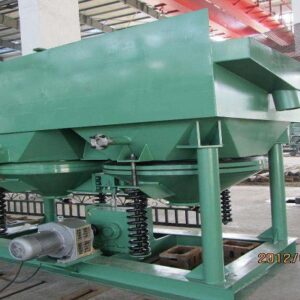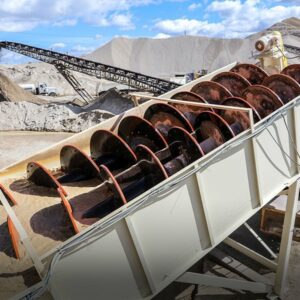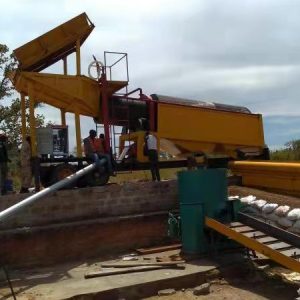What is a jaw crusher?
A jaw crusher is a machine used for primary stone crushing, reducing minerals or rocks into smaller sizes or gravel. It is essential in various fields such as mining, quarrying, road aggregate, and construction industries.
The main components of a jaw crusher work together to provide crushing functionality.
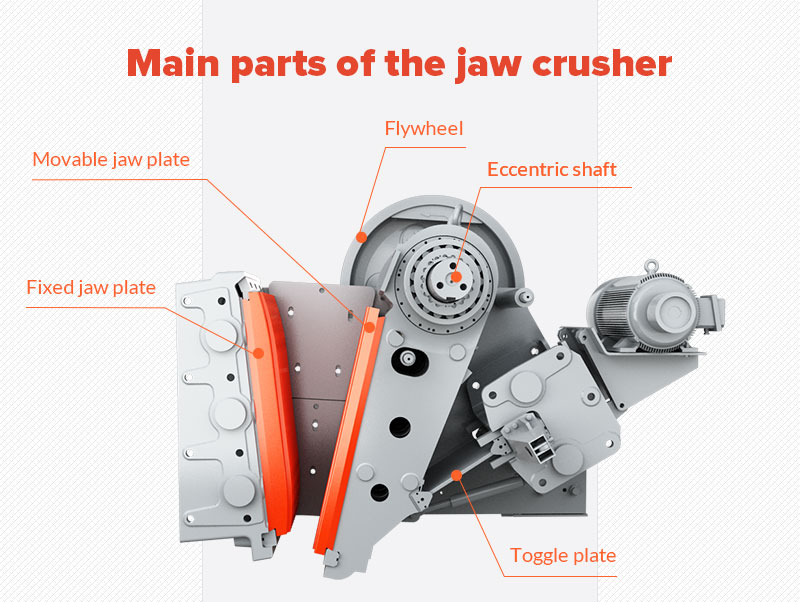
A jaw crusher consists of the fixed jaw plate, movable jaw plate, toggle plate, eccentric shaft, flywheel, and other components.
1. Fixed jaw plate
The fixed jaw plate is a stationary, rigid surface that forms the upper part of the crushing chamber. It remains immobile and does not move while the crushing process takes place. It is constructed from high manganese steel or other materials that are resistant to wear.
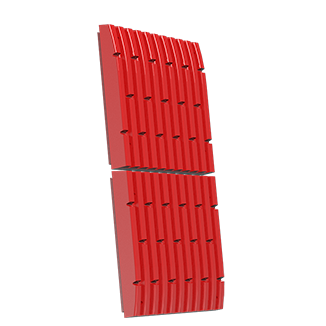
2. Swing Jaw
The swing jaw, also known as the movable jaw plate, is the part of the jaw crusher that moves back and forth against the fixed jaw plate. It applies pressure on the materials and crushes them. Typically, the swing jaw is made of cast material.
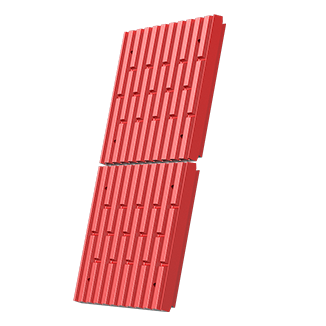
3.Toggle Plate
The toggle plate, also referred to as the thrust plate, enables the jaw to move vertically, thereby controlling its motion and regulating the size of crushed material. Toggle plates are typically constructed from cast iron or high manganese steel.
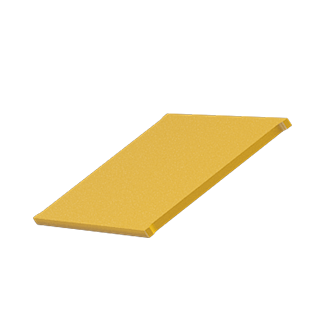
4. Eccentric shaft
The eccentric shaft, made of high-carbon steel for durability and resistance to bending, is the main shaft of the crusher. It bears a significant bending force and transmits the motor’s rotational motion to the movable jaw.
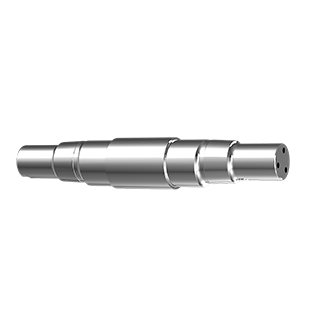
5.The flywheel generates inertial force by rotating and stores energy, which is then transmitted to ensure the smooth and continuous operation of the machine during the crushing process. Flywheels are commonly made of cast iron or cast steel.
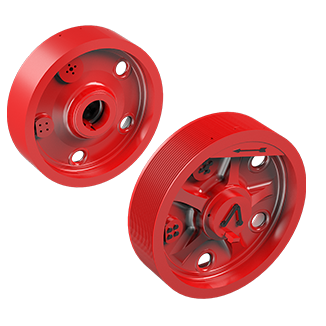
Among these parts, the jaw plates (one fixed and one movable) are the most susceptible to wear in the jaw crusher. Therefore, regular inspection and replacement of the jaw plate is necessary for efficient machine operation. Learn how to choose the right jaw plate.
Other parts and their functions in the jaw crusher:
– Frame: Keeps the machine in place and protects it from abrasion.
– Bearing: Supports rotating components such as the eccentric shaft and flywheel.
– Tension rod: Controls movement of the movable jaw and prevents impact on the front main frame under any circumstances.
– Adjusting set: Changes the size of crusher’s discharging opening to meet different customer requirements.
Popular types of jaw crushers
The first invention of a jaw crusher was made by Whitney Blake in 1858. Building upon this foundation, FTM Machinery has introduced advanced technology and gradually developed four popular types of jaw crushers: PE/PEX series, HD German version series, CJ European version series, and mobile jaw crushers.
1. PE/PEX Jaw Crusher
The PE/PEX type is an earlier model with a simple structure. The PE type serves as a primary jaw crusher while PEX type functions as a secondary one. It is primarily used in small stone production lines.
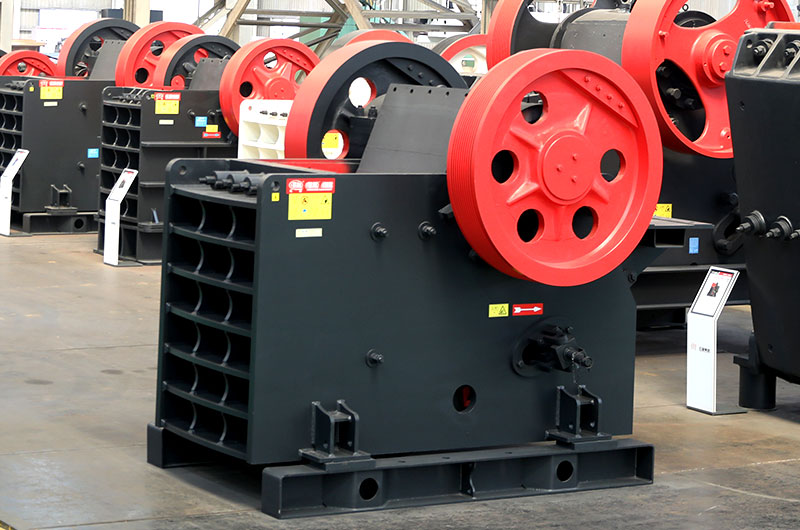
Maximum feed size: ≤1,200 mm
Particle size at discharge: 10-350 mm
Production capacity: 1-1,200 t/h
2. German HD Jaw Crusher
The HD series jaw crusher, developed by FTM Machinery in conjunction with German crushing technology, features a large inclination angle of the toggle plate for increased output and more uniform particle size. It optimizes the crusher cavity and excels in processing hard materials.
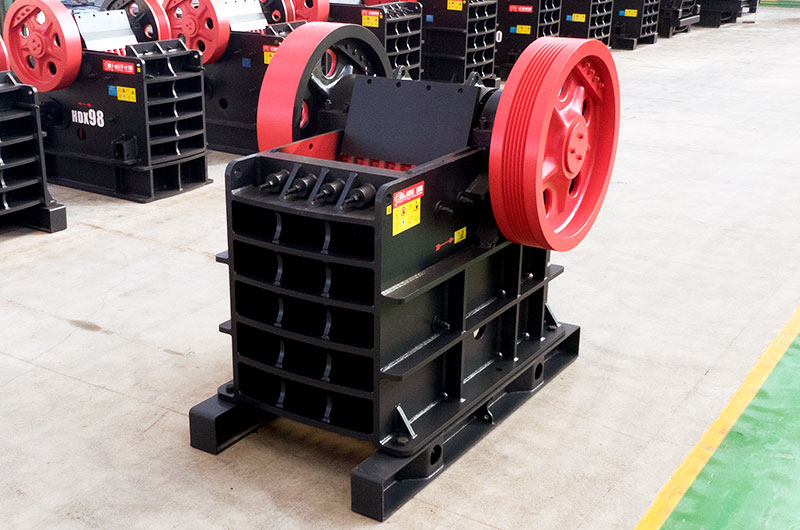
Maximum feed size: ≤900 mm
Particle size at discharge: 45-225 mm
Processing capacity: 50-750 t/h
3.CJ European type jaw crusher
The CJ series jaw crusher is an advanced crushing equipment that offers the advantages of small space requirements, a large crushing ratio, and high processing capacity. It is the ideal choice for stone production lines of large and medium sizes.
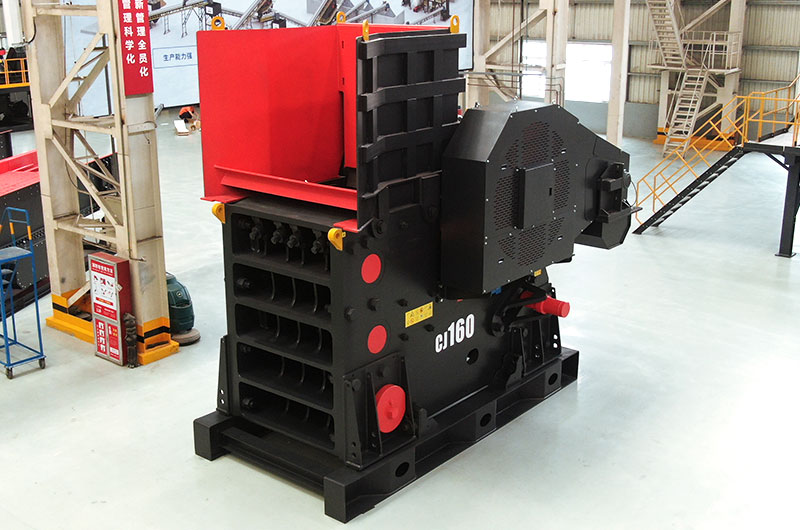
Maximum feeding size: ≤1,040 mm
Discharge particle size: 60-300 mm
Processing capacity: 105-1,280 t/h
Mobile jaw crusher
Comprising a jaw crusher, vibrating feeder, screening equipment, conveying equipment, and more, it transforms into a mobile coarse crushing production line. Its usage reduces material transportation time and production expenses.
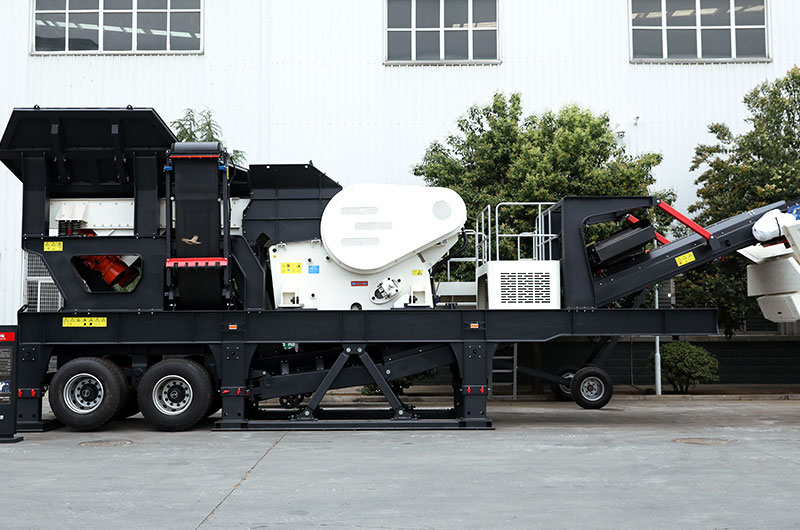
Furthermore, jaw crushers in the market can be categorized into four types based on their different modes of movement: Blake jaw crusher, Dodge jaw crusher, PE universal jaw crusher, and mobile jaw crusher. To gain a better understanding of these options, read this comparison of the four jaw crushers.
What sets GUOGAO Machinery’s jaw crushers apart?
GUOGAO Machinery is a reputable manufacturer that specializes in producing high-quality jaw crushers. With expertise in research and development, production, sales, and service, our machines offer exceptional advantages such as:
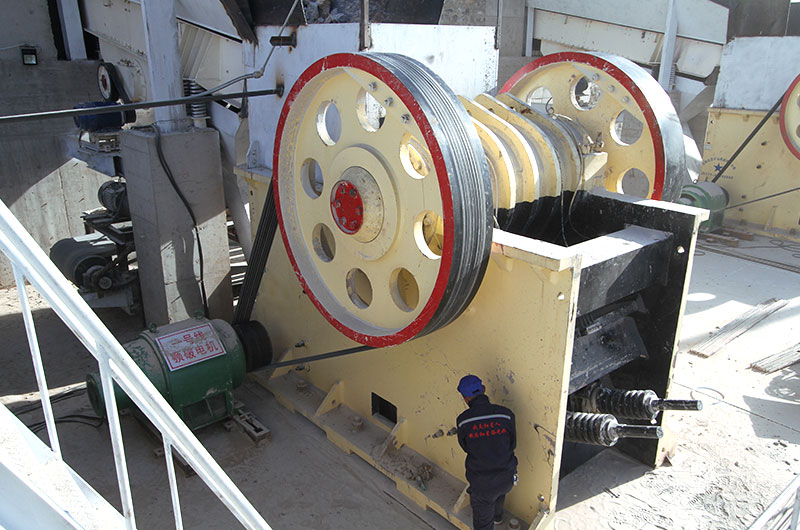
High crushing capacity: Jaw crushers can handle large feed sizes and have a high capacity for crushing. They efficiently process materials with compressive strength up to 320 MPa.
Durable construction: Jaw crushers are built with robust and heavy-duty bases. The use of high-quality components ensures their durability and extended operational life.
Adjustable output size: The discharge opening can be adjusted using the wedge, allowing control over the size of the output to meet different user requirements.
Versatile jaw plate options: Different configurations of jaw plates can be used to suit specific applications. Types of jaw plates, such as high manganese steel, alloy steel, or composite materials, are used to enhance wear resistance.
Automatic lubricating device: Equipped with a safe and reliable lubrication system that improves equipment utilization and reduces maintenance costs.
High efficiency and energy saving: The jaw crusher can deliver up to 25% more tons per hour than other comparable crushers. It also saves standalone energy by 15%-30%.
How does a jaw crusher operate?
A jaw crusher operates by crushing and breaking material using the movement of its jaw plates. The motor drives the belt and pulley, causing the movable jaw to move up and down through the eccentric shaft. The trajectory of the movable jaw follows an arc with the mandrel as its center.
Customer Case – Jaw Crusher for Sale in DRC
In June 2022, an Indonesian customer purchased a jaw crusher for limestone processing. Based on his production requirements and desired final product, we suggested this jaw stone crusher with a capacity of 800 t/h. The specific details are as follows:
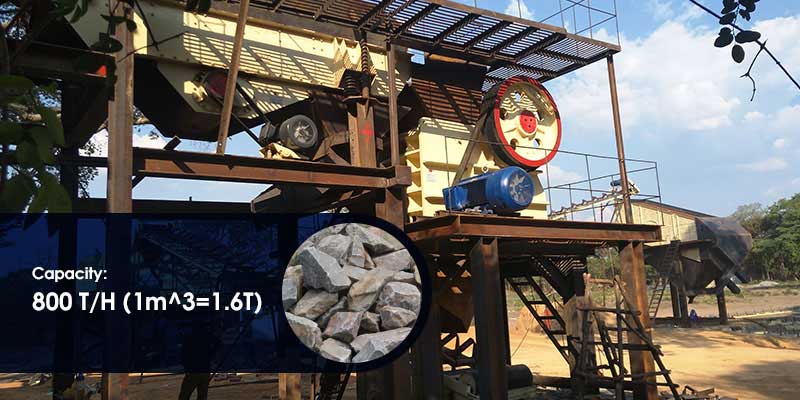
| Project | Congo DRC crushing production line |
| Raw material | Limestone |
| Hardness | Relatively soft |
| Model | PE1200×1500 |
| Capacity | 800 T/H |
| Feeding size | ≤1,020 mm |
| Production line type | Fixed |
| Finished products | 0-10 mm, 10-20 mm, 20-40 mm, 40-80 mm |
PE Series Jaw crusher
| Model | Feed opening size(mm) | Max.Feeding size (mm) | Adjustment range of discharge port (mm) | Capacity(t/h) | Rotation speed of eccentric shaft(r/min) | Power (kw) | Dimensions(L×W×H) (mm) |
| PE 150×250 | 150×250 | 125 | 10-40 | 1-3 | 268 | 4P 5.5 | 760×700×860 |
| PE 200×300 | 200×300 | 180 | 15-50 | 2-6 | 260 | 4P 7.5 | 915×780×990 |
| PE 200×350 | 200×350 | 180 | 18-60 | 3-10 | 276 | 4P 11 | 1000×914×1112 |
| PE 250×400 | 250×400 | 210 | 20-70 | 5-21 | 300 | 6P 15 | 1100×1032×1285 |
| PE 400×600 | 400×600 | 340 | 40-100 | 16-64 | 270 | 6P 30 | 1623×1736×1615 |
| PE 500×750 | 500×750 | 425 | 50-100 | 40-110 | 268 | 6P 55 | 1920×1850×1920 |
| PE 600×750 | 600×750 | 500 | 150-200 | 80-240 | 268 | 6P 55 | 2020×1850×1920 |
| PE 600×900 | 600×900 | 500 | 65-160 | 50-160 | 254 | 6P 55 | 2530×1900×2340 |
| PE 750×1060 | 750×1060 | 630 | 80-180 | 110-320 | 245 | 8P 110 | 2680×2380×2785 |
| PE 900×1200 | 900×1200 | 750 | 100-200 | 220-380 | 208 | 8P 110 | 3470×2876×3330 |
| PE1200×1500 | 1200×1500 | 1020 | 150-350 | 400-1000 | 180 | 8P 160-245 | 4850×3220×3680 |
| PE1500×1800 | 1500×1800 | 1200 | 220-350 | 500-1200 | 180 | 8P 280-380 | 5160×3660×4248 |
| PEX 150×750 | 150×750 | 120 | 18-48 | 8-25 | 320 | 4P 15 | 1170×1575×1030 |
| PEX 250×750 | 250×750 | 210 | 25-60 | 13-35 | 320 | 6P 22 | 1550×1730×1470 |
| PEX 250×1000 | 250×1000 | 210 | 25-60 | 16-52 | 330 | 6P 30 | 1580×2006×1390 |
| PEX 250×1200 | 250×1200 | 210 | 25-60 | 20-61 | 330 | 6P 37 | 1780×2214×1430 |
| PEX 300×1300 | 300×1300 | 250 | 20-90 | 16-105 | 300 | 6P 55 | 2210×2320×1723 |
HD Series Jaw Crusher
| Model | Feeding opening size(mm) | Max.Feeding size (mm) | Adjustment range of discharge port(mm) | Capacity(t/h) | Power(kw) | Dimensions L×W×H (mm) |
| HD72(57) | 460×720 | 425 | 45-100 | 50-120 | 6P 55 | 2100×1556×1640 |
| HD86(69) | 580×860 | 500 | 50-150 | 60-280 | 8P 75 | 2200×1754×1810 |
| HD98(751) | 680×980 | 630 | 75-175 | 110-410 | 8P 110 | 2660×1960×2175 |
| HD110(912) | 850×1100 | 750 | 100-200 | 230-550 | 6P 132 | 2960×2381×2556 |
| HD125 | 950×1250 | 900 | 125-225 | 280-750 | 8P 160 | 3500×2614×2925 |
CJ Series Jaw Crusher
| Model | Maximum Feeding size(mm) | Feeding opening size L×W(mm) | Adjustment range of discharge port(mm) | Capacity(t/h) | Power(KW) | Dimensions L×W×H(mm) |
| CJ96 | 480 | 930×580 | 60-175 | 105-390 | 4P 90 | 2850×2270×1950 |
| CJ106 | 560 | 1060×700 | 70-200 | 150-500 | 4P 110 | 3280×2580×2400 |
| CJ120 | 700 | 1200×870 | 70-200 | 175-610 | 4P 160 | 3700×2790×2950 |
| CJ125 | 760 | 1250×950 | 100-250 | 270-831 | 4P 160 | 4230×2780×2960 |
| CJ150 | 960 | 1400×1200 | 125-250 | 340-880 | 4P 200 | 5030×3440×3970 |
| CJ160 | 960 | 1600×1200 | 150-300 | 430-1145 | 4P 250 | 5780×3460×3580 |
| CJ200 | 1200 | 2000×1500 | 175-300 | 630-1590 | 6P 400 | 6600×3000×4400 |
| CJ1511 | 850 | 1500×1070 | 125-300 | 380-1080 | 6P 200 | 4130×3000×3330 |
| CJ1513 | 1040 | 1500×1300 | 150-300 | 480-1160 | 6P 200 | 4620×2890×4190 |


